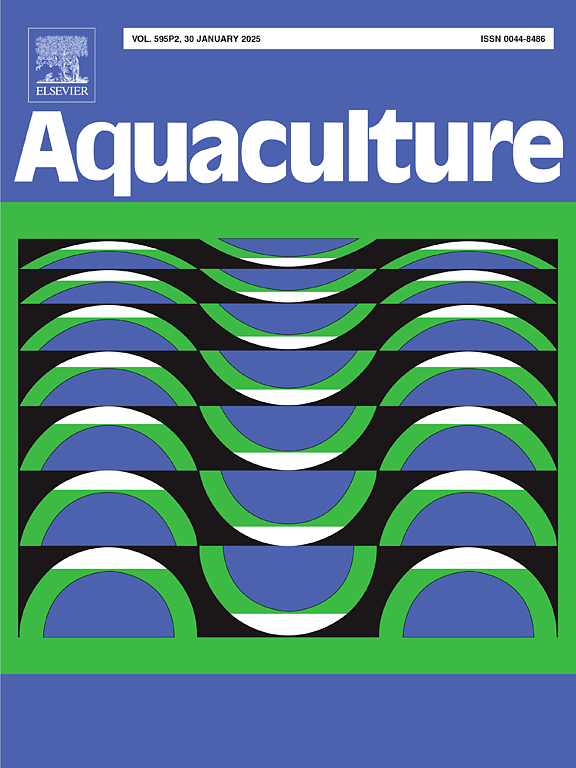Frequent horizontal transfer of AHPND-related plasmid among Vibrionaceae in the rotifers and its implication for shrimp disease management
IF 3.9
1区 农林科学
Q1 FISHERIES
引用次数: 0
Abstract
Acute hepatopancreatic necrosis disease (AHPND) caused by Vibrio parahaemolyticus is a newly emerging bacterial disease in the cultured shrimp. However, it remains unclear how AHPND-related plasmid can be disseminated among bacterial species via live feed. To this end, we first developed an epicPCR method to amplify the fusion products of pirB-16S rRNA, which was then used to confirm the host range of the AHPND-related plasmid. Next, we traced the horizontal transfer of pirB by inoculating rotifers with pirB-positive V. parahaemolyticus into three shrimp tanks and maintained the cultivation of shrimp from stage N5 to the post-larval stage PL18. Vibrionaceae were isolated from the rearing water and rotifers at day 36. Meanwhile, shotgun metagenomic sequencing (SMS) was performed for rearing water and rotifers to understand the dynamics of microbial community. Results showed that AHPND-related plasmid not only disseminated among Vibrio spp., but also transferred into other genera such as Shewanella, Aeromonas and Photobacterium in the rearing water and rotifers. SMS showed that relative to the rearing water, higher abundance of Vibrio spp. was found in rotifers. Subsequently, we also isolated Vibrio spp., Shewanella, and Photobacterium from the rearing water and rotifers, confirming the presence of AHPND-related plasmid in above genera. Moreover, rotifers harbored more strains carrying the AHPND-related plasmid, suggesting that the rotifers acted as potential vectors for its dissemination. These results underscored the need to include live feeds in the assessment of potential biosecurity risks.
求助全文
约1分钟内获得全文
求助全文
来源期刊

Aquaculture
农林科学-海洋与淡水生物学
CiteScore
8.60
自引率
17.80%
发文量
1246
审稿时长
56 days
期刊介绍:
Aquaculture is an international journal for the exploration, improvement and management of all freshwater and marine food resources. It publishes novel and innovative research of world-wide interest on farming of aquatic organisms, which includes finfish, mollusks, crustaceans and aquatic plants for human consumption. Research on ornamentals is not a focus of the Journal. Aquaculture only publishes papers with a clear relevance to improving aquaculture practices or a potential application.
 求助内容:
求助内容: 应助结果提醒方式:
应助结果提醒方式:


